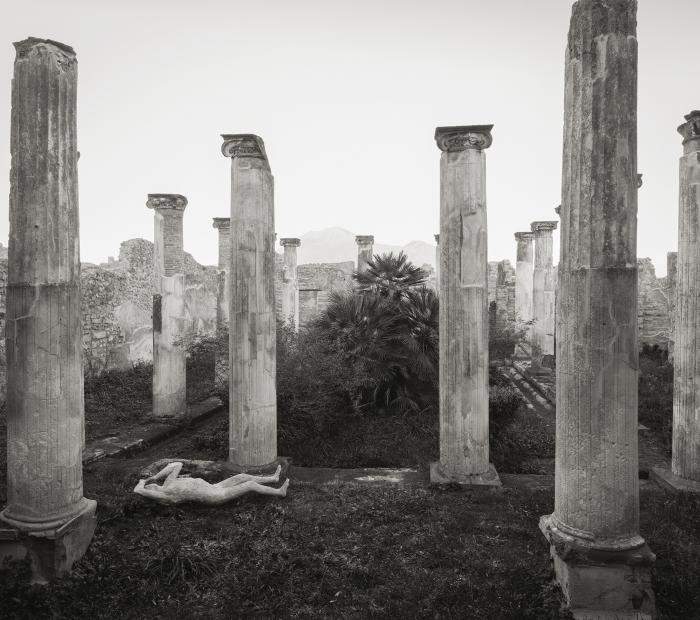Modena, an exhibition dedicated to Pompeii in the shots of Japanese photographer Kenro Izu
Fondazione Modena Arti Visive presents from December 6, 2019, to April 13, 2020, a striking exhibition dedicated to Pompeii, curated by Chiara Dall’Olio and Daniele De Luigi. The exhibition, titled Requiem for Pompeii, is co-promoted by the Archaeological Park of Pompeii, which will lend some reproductions of the famous plaster casts of the victims of the eruption for the occasion and subsequently host it in its exhibition spaces.
The protagonist is the Japanese photographer Kenro Izu (Osaka, 1949), who has always been fascinated by the vestiges of ancient civilizations, which led him to make series of images inside the world’s most important and well-known archaeological sites, fromEgypt to Cambodia,Indonesia toIndia, Tibet to Syria.
The exhibition features a selection of 55 previously unpublished images, donated by Kenro Izu to the Fondazione Cassa di Risparmio di Modena, taken among the ruins of Pompeii, where the artist placed, in a poetic gesture of piety, copies of the original casts of bodies that stand out like white human silhouettes.
Kenro Izu’s intention is not to document the remains of Pompeii, but to convey the suspended character between wonder and destruction that comes from the ruins, insisting on the idea of what is left, the day after the eruption of Vesuvius.
Kenro Izu, who will also be a visiting professor of the Master’s Program on the Contemporary Image at the Fondazione Modena Arti Visive School of Higher Education, will be the protagonist of the artist talk Kenro Izu: Pompeii between history, matter and spirit, in dialogue with the curators of the exhibition, Wednesday, Dec. 11 at 6 p.m. in the spaces of FMAV - MATA.
Kenro Izu (1949, Osaka) began photographing in the 1960s, completing his training at the College of Arts of Nihon University in Tokyo. In 1970 he moved to New York, where he still lives and works. In 1979 he made his first trip to Egypt and, impressed by the grandeur of the Pyramids and the sense of transcendence conveyed by the ruins, he began one of his most famous series, Sacred Places, which would take him over the next decades to photograph the world’s most important archaeological sites, from Cambodia to Tibet, India toEurope, and Mexico, Peru andEaster Island.
Fascinated by ancient remains, he identified the recovery of styles and printing techniques typical of nineteenth-century photography as the most suitable medium for imprinting the magical atmosphere of the places he encountered in his images. His photographs are platinotypes, cyanotypes and silver gelatin prints, which the artist makes manually in the darkroom from large-format negatives. His works have been featured in numerous solo and group exhibitions, held at the Rubin Museum of Art, New York (2004), the Tokyo Metropolitan Teien Art Museum (2005), theArt Museum, University of Kentucky, Lexington (2007), the Detroit Institute of Art, the Kiyosato Museum of Photographic Art, Yamanashi, Japan (2008), and the Museum of Photographic Arts, San Diego (2009).
His work is held within the photographic collections of the Boston Museum of Art, Canadian Center for Architecture, J. Paul Getty Museum, Galleria Civica Modena, Houston Museum of Fine Art, Kiyosato Museum of Photographic Arts, Metropolitan Museum of Art, Museum of Photographic Arts, San Francisco Museum of Modern Art, Santa Barbara Museum of Arts, and Tokyo Metropolitan Museum of Photography.
For all information you can visit the official website of the Modena Visual Arts Foundation.
Pictured: Kenro Izu, House of Apollo, Pompeii (2016).
 |
| Modena, an exhibition dedicated to Pompeii in the shots of Japanese photographer Kenro Izu |
Warning: the translation into English of the original Italian article was created using automatic tools. We undertake to review all articles, but we do not guarantee the total absence of inaccuracies in the translation due to the program. You can find the original by clicking on the ITA button. If you find any mistake,please contact us.



























